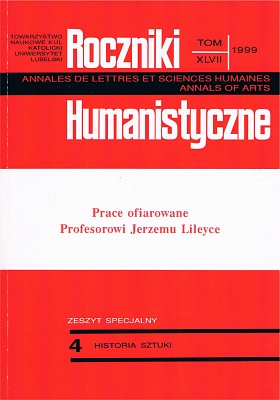Warszawskie szkolnictwo artystyczne dla kobiet na przełomie XIX i XX wieku
Abstrakt
At the end of the 19th century Warsaw was the centre of economic, cultural and political life in the Polish Kingdom. About 1900 it had a population of nearly 700 thousand. Among its inhabitants women constituted a majority (according to the sources from 1888 on 1000 men there were 1112 women).
Hence the problem of educating women acquired a great significance, the more so because they could not attend secondary and high state schools and their aspirations as well as the need to be employed in various jobs grew ever bigger. Among them a special place was taken by artistic jobs connected with practising both the so-called “pure art” and the ever more popular “applied” art.
After the January Uprising in 1863 there was only one state artistic school in Warsaw – the Drawing Class. In the years 1872-1896 its headmaster was Wojciech Gerson. The school also did not accept women. This situation stimulated development of private education. Various artists taught their students in their own studios. Also Gerson was one of them; apart from men he had many women-students. With time, more and more regular private schools were established, also by women who had been educated at schools of this type in Vienna or Paris. Moreover, courses were organised at museums and other institutions. Well-known Warsaw painters, sculptors and architects usually gave lectures at them, often according to academic syllabuses. The courses comprised freehand drawing of plasters and models and other subjects as the basic ones, depending on the profile and standard of the school. Some of them put a greater stress to oil-painting or water-colours, others to ornamental or architectonic drawing, and lastly many of them prepared their students to professional painting on porcelain, glass, cloths (so-called Gobelin ones), on ivory, to embellishing leather, wood and other materials with the help of various techniques.
One well-known result of the programme of this type of education is a report of the special courses at the Industry and Craft Museum presented in detail in one of Bolesław Prus's Weekly Chronicles. According to the report the students, among others, designed patterns for wall paper, clothes and decorative materials, some retouched photographs, others painted pottery, embellished letter paper, leather and paper haberdashery, designed wicker goods including furniture. These are probably only some of the specialities acquired by students of the numerous schools and courses preparing to jobs defined as artistic ones. The students were then employed in many workshops and factories that produced this type of goods at different scales.
Many students practised only or also portrait or landscape painting or flower compositions, took up artistic engraving or chamber sculpture. Their works were shown in many prestigious exhibitions and in the Warsaw Annual Salons. The Warsaw artistic schools rendered a great service to a couple of generations of Polish women, which was also profitable for the whole sphere of culture.
Copyright (c) 1999 Roczniki Humanistyczne

Utwór dostępny jest na licencji Creative Commons Uznanie autorstwa – Użycie niekomercyjne – Bez utworów zależnych 4.0 Międzynarodowe.





